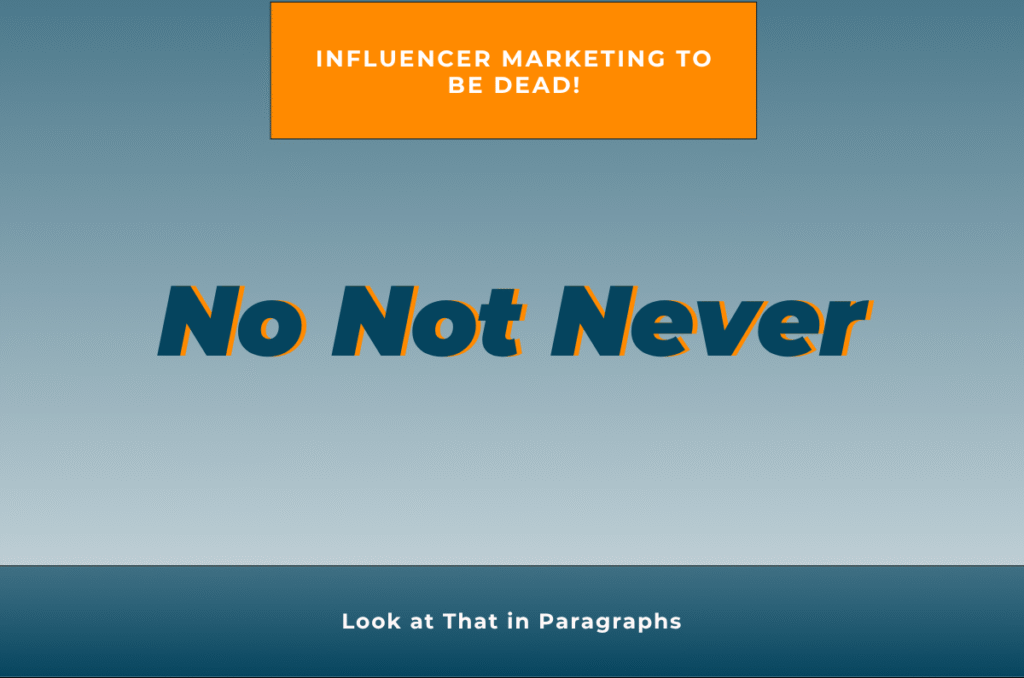As we delve in modern era, the question on many marketers’ minds seems to be “Is influencer marketing dead?”
Influencer marketing, the act of promoting products through popular individuals on social media platforms, has been a significant part of the digital marketing landscape for the past decade. But with the rapidly evolving nature of digital marketing, is this once tried-and-true strategy now fading into obsolescence? Let’s unpack this.
Firstly, it’s important to understand that while the landscape of influencer marketing is changing, it’s certainly not dead. Instead, it is TRANSFORMING, adapting to the shifts in consumer behavior, technological advancements, and the increasing demand for authenticity and transparency.
The Rise of Micro-Influencers
One major shift in the influencer marketing landscape is the rise of micro-influencers. These are individuals with a smaller, more niche following compared to the traditional influencers who boast millions of followers. Micro-influencers, with their more intimate and engaged audiences, are often perceived as more genuine and authentic, leading to higher engagement and conversion rates. This trend seems to be more prevalent than ever, heralding a new era for influencer marketing.
The Demand for Authenticity and Transparency
Secondly, consumers in today’s are more intelligent and demand authenticity and transparency from brands and influencers. This means that blatant product promotions without genuine endorsement or usage by the influencer are no longer effective. As a result, brands are now partnering with influencers who genuinely resonate with their products and services, leading to more authentic and effective marketing campaigns.
Technological Advancements
The evolution of technology has also played a significant role in shaping influencer marketing in coming years. With the growth of virtual reality (VR), augmented reality (AR), and artificial intelligence (AI), influencers now have more tools at their disposal to create immersive and interactive content. This has opened up new avenues for influencer marketing, making it more exciting and engaging than ever before.
Regulatory Changes
Lastly, the tightening of regulations around influencer marketing has also impacted its landscape. Influencers are now required to clearly disclose their relationships with brands, making influencer marketing more transparent and trustworthy. This has resulted in a more level playing field, where the quality of content and the authenticity of the influencer-brand relationship matter more than ever before.
Conclusion
In conclusion, while influencer marketing in coming years may look very different from what it was a decade ago, it is far from dead. Instead, it has evolved, adapted and grown, much like the DIGITAL MARKETING LANDSCAPE itself. Brands that understand and adapt to these changes will continue to reap the benefits of influencer marketing in the years to come. It’s safe to say that influencer marketing is not just surviving, it’s thriving, only with a new face and new rules to play by.

